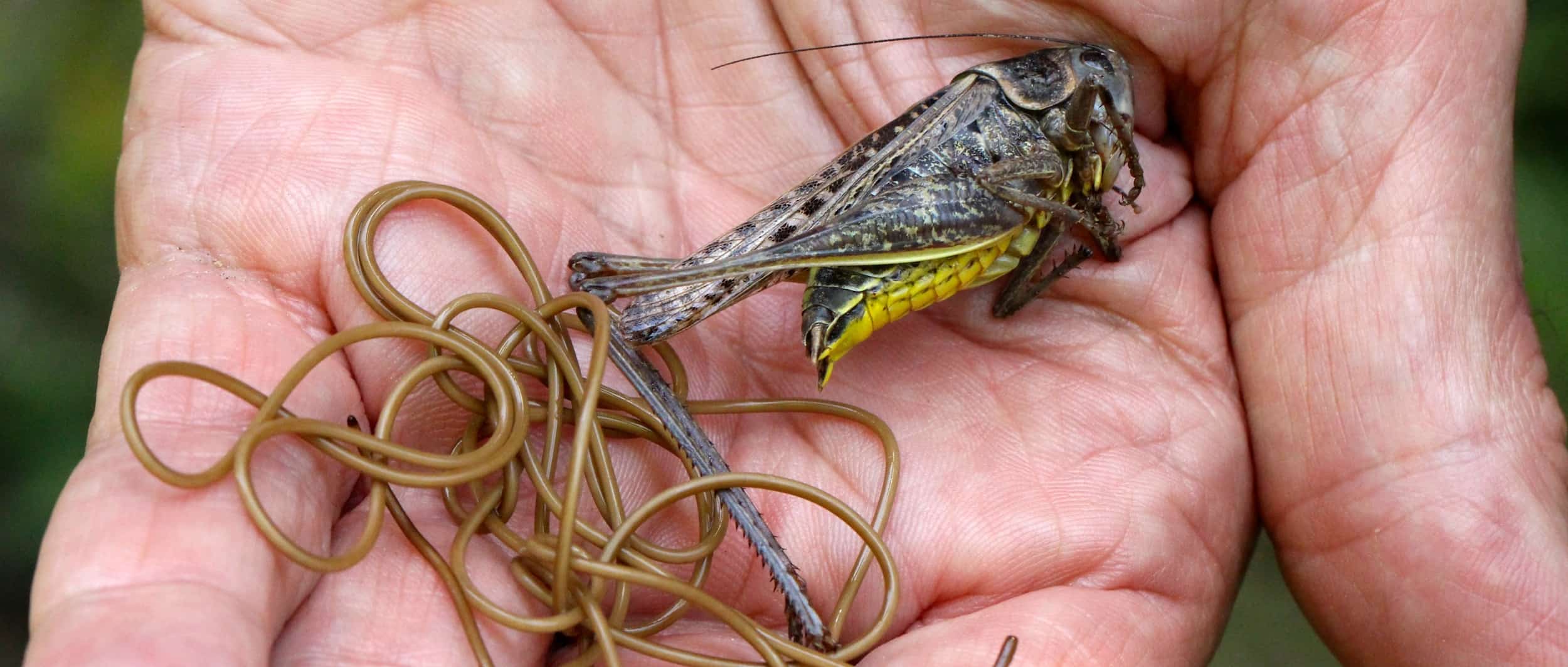Share this article
The Song Within: Parasites Could Temper Cricket Noise
Parasites may be able to affect the way that crickets use mating calls to suit their best interests, according to a new study.
“Whether it’s an evolutionary adaptation, we can’t say,” said Megan Wise de Valdez, an assistant biology professor and coordinator at Texas A&M University-San Antonio and senior author of a new study published in the Journal of Parasitology. But her team’s research shows that some house crickets (Acheta domesticus) infected with horsehair worms (Paragordius varius) call less frequently in later stages of the parasites’ development.
Horsehair worms are parasites that enter the bodies of crickets and other insects at a younger stage in their lives. They grow inside their hosts until they get large enough to fill most of the body cavity of the insect.
But the horsehair worms need water to lay their eggs, so they have developed a special ability in which they convince their insect hosts to commit suicide by jumping into a water body. Once the host is inside, the worms exit their bodies, leaving the insects to drown.
Observing that the worms were able to implant this suicidal impulse into the crickets, Wise de Valdez wondered whether they could alter behavior like calling in their hosts. Crickets make noise to attract mates, but the action can also attract the unwanted attention of predators that eat the insects — an act that hardly favors horsehair worms.
The cricket chirp, produced as male insects rub their wings together, also uses up a lot of energy resources that parasites feed on.
“Calling is really energetically expensive,” Wise de Valdez said, noting that the researchers first had to identify the crickets that made the most noise in populations. In nature some male crickets hang around the chirpier insects waiting for the chance to mate with an approaching female. “You have to have a really fit individual to be a good caller.”
The researchers infected some crickets with worms and left some without and found that infected crickets called less frequently between 22 and 30 days after the parasites entered their bodies.
“We did find a significant reduction in calling but only when the nematamorph was almost ready to emerge,” she said. This makes sense because the parasites need the crickets to stay alive long enough to commit suicide by drowning.
Wise de Valdez said that though the sounds seemed to be reduced, it’s unclear whether this has developed as an evolutionary adaption on the worms’ part. The cricket could call less due to being weakened from the parasite eating its insides, for example. She said the next step to proving this behavioral change would be to get a natural predator and find out if infected crickets were eaten less often than uninfected crickets. Unlike their experiment, which used laboratory crickets, researchers would also have to use wild crickets because they may act differently than captive breeds.
Watch as a cricket infected by a horsehair worm commits suicide by drowning in a pool. Once the cricket is in the water, the worm exits the cricket’s body.
Header Image: A horsehair worm exits its insect host. A new study shows that these parasites may affect the frequency with which house crickets call for mates.
Image Credit: Alastair Rae, licensed by cc 2.0








